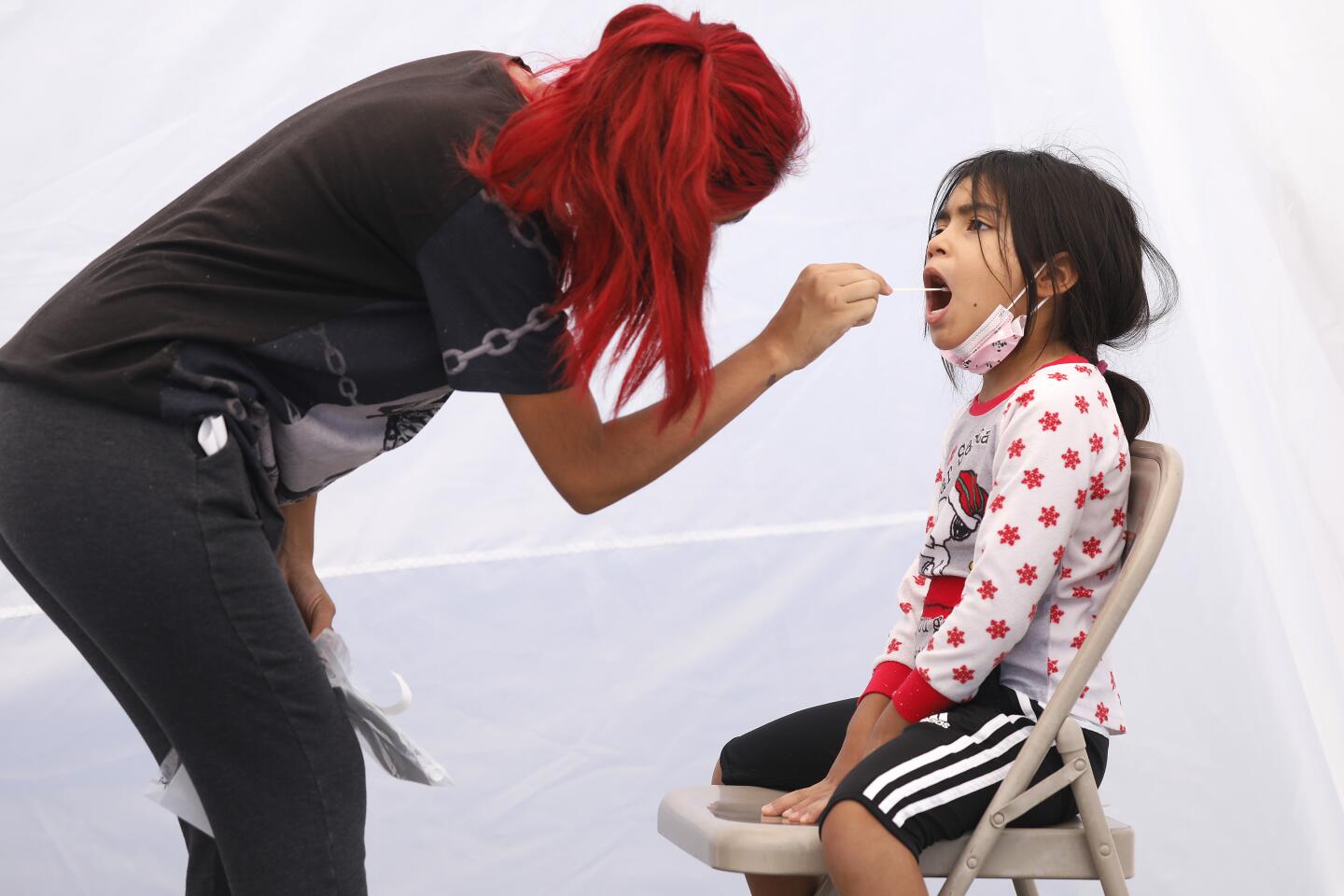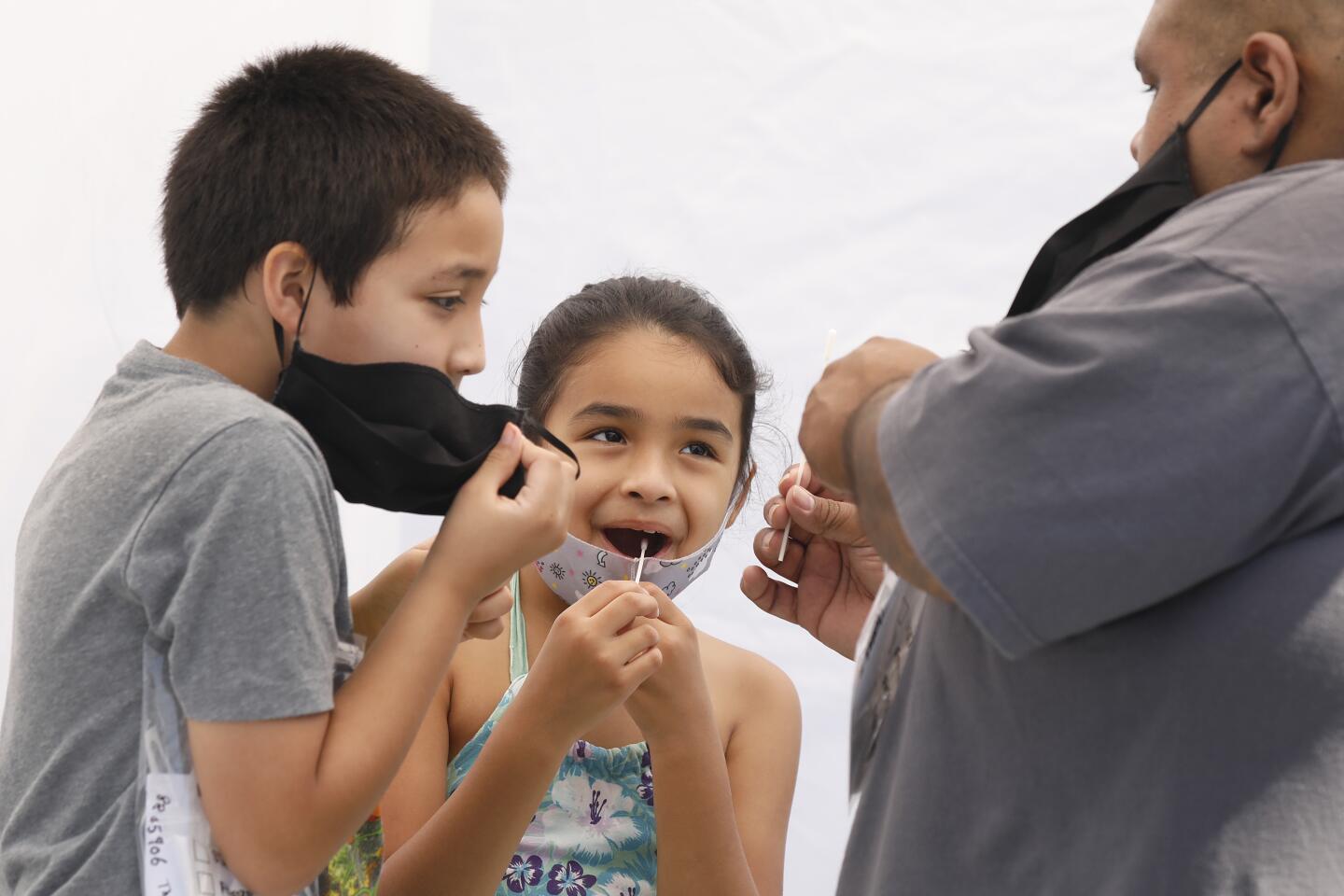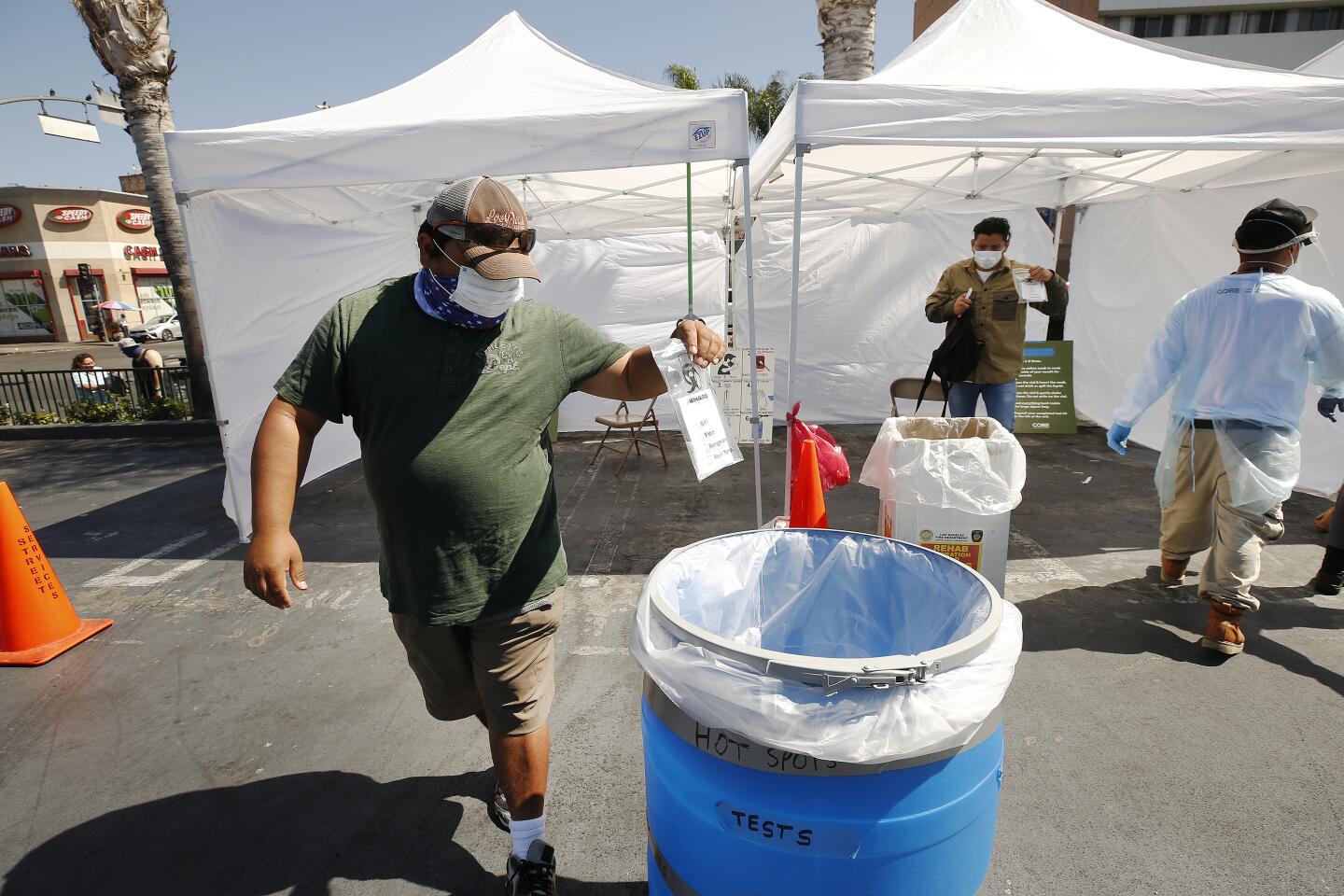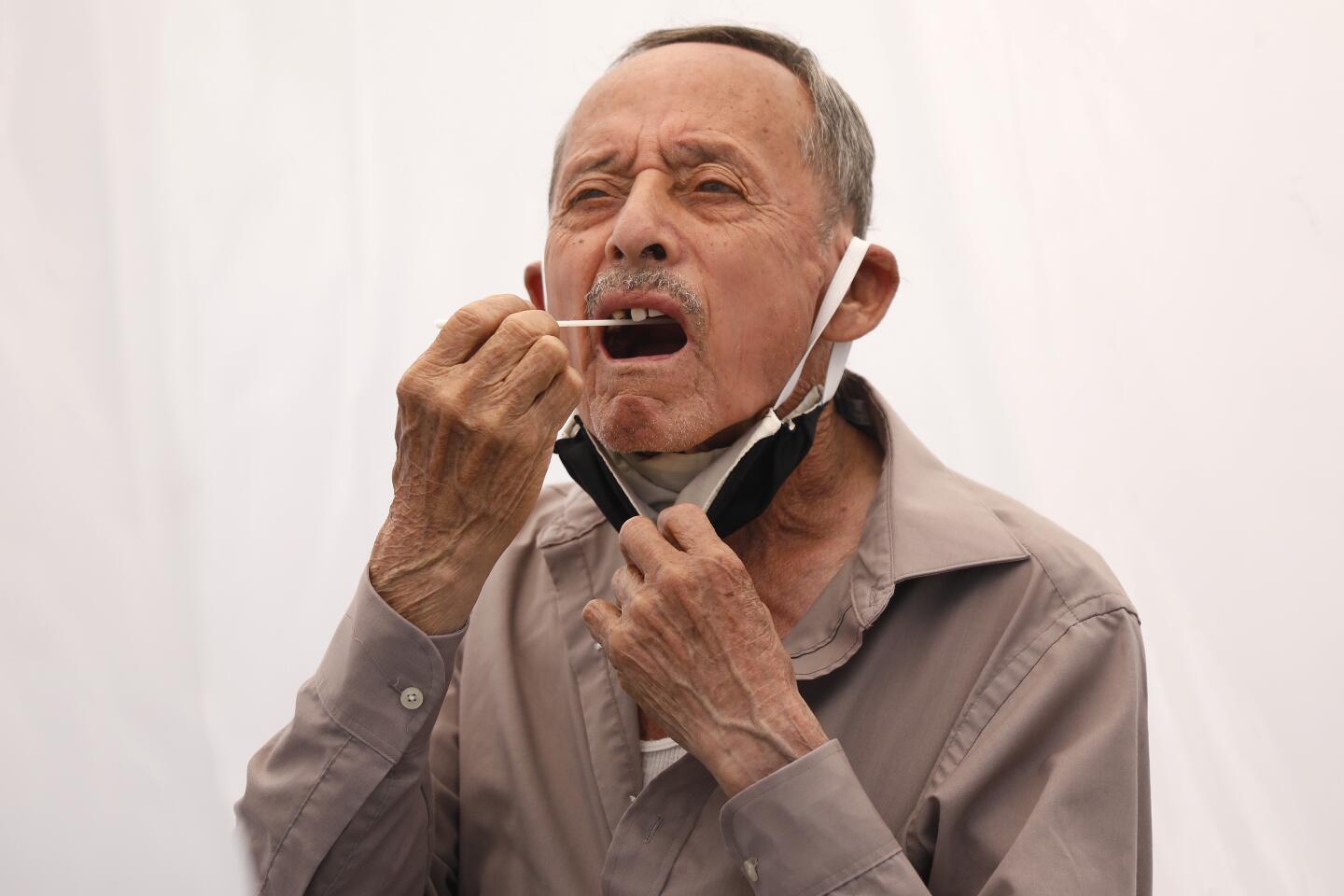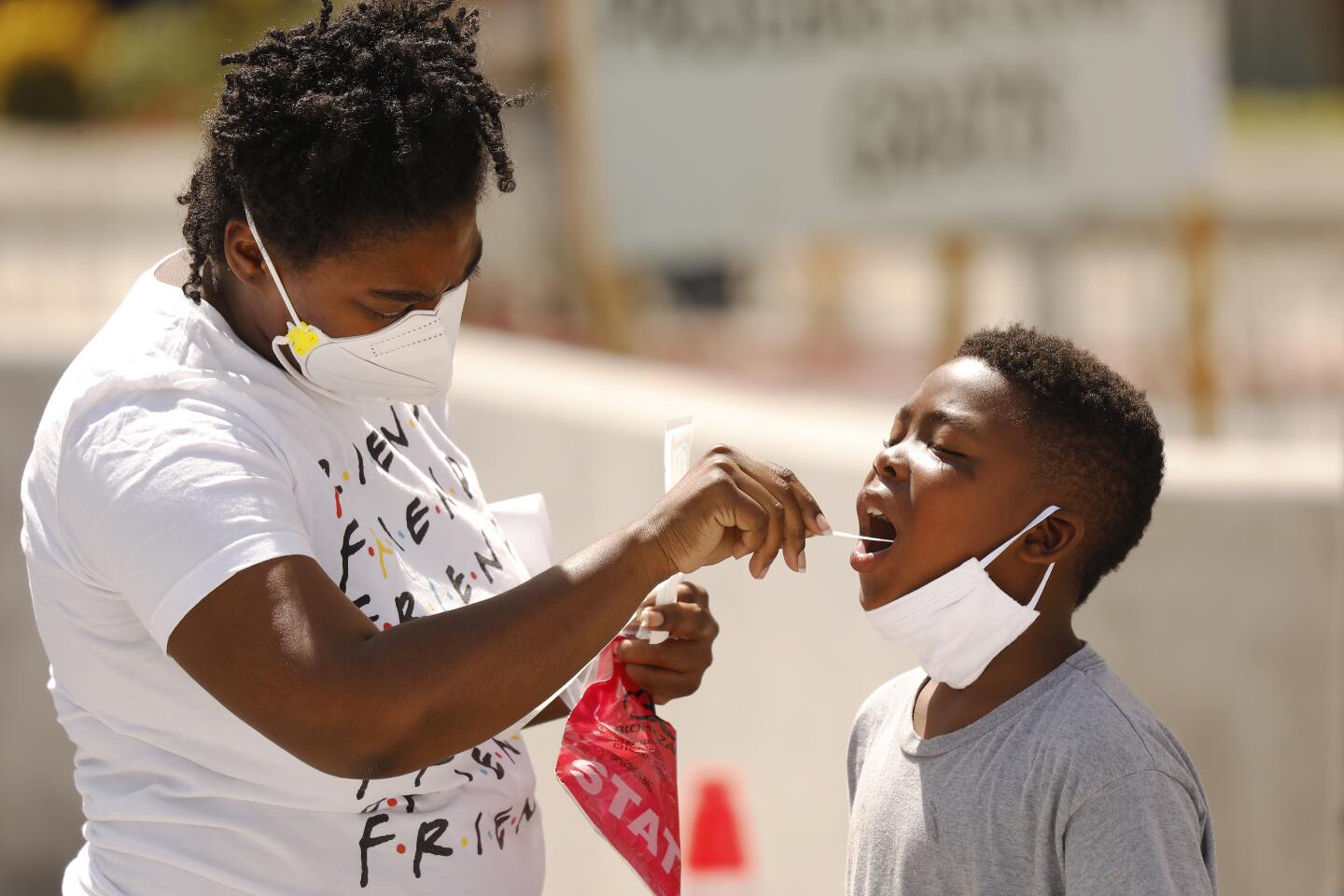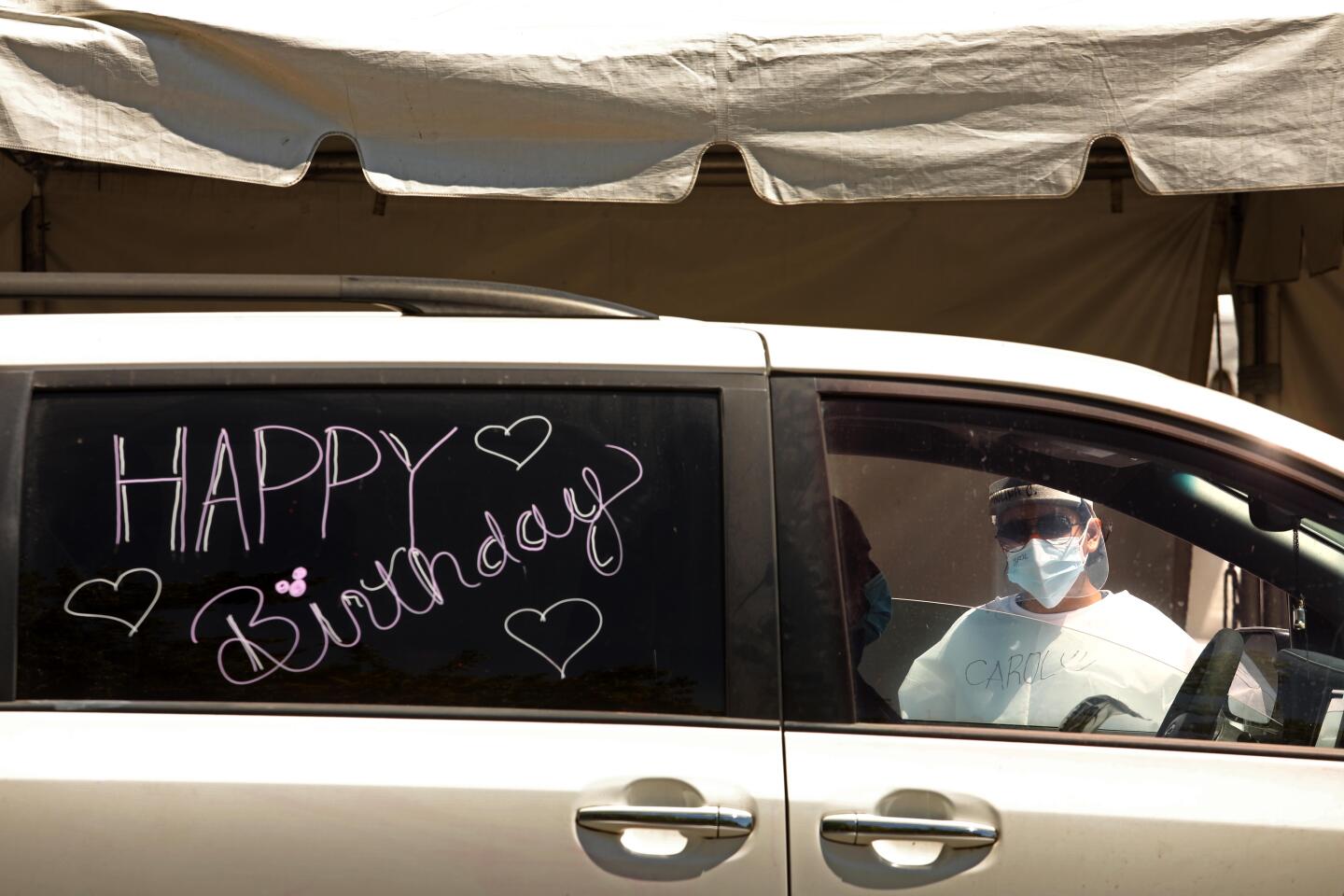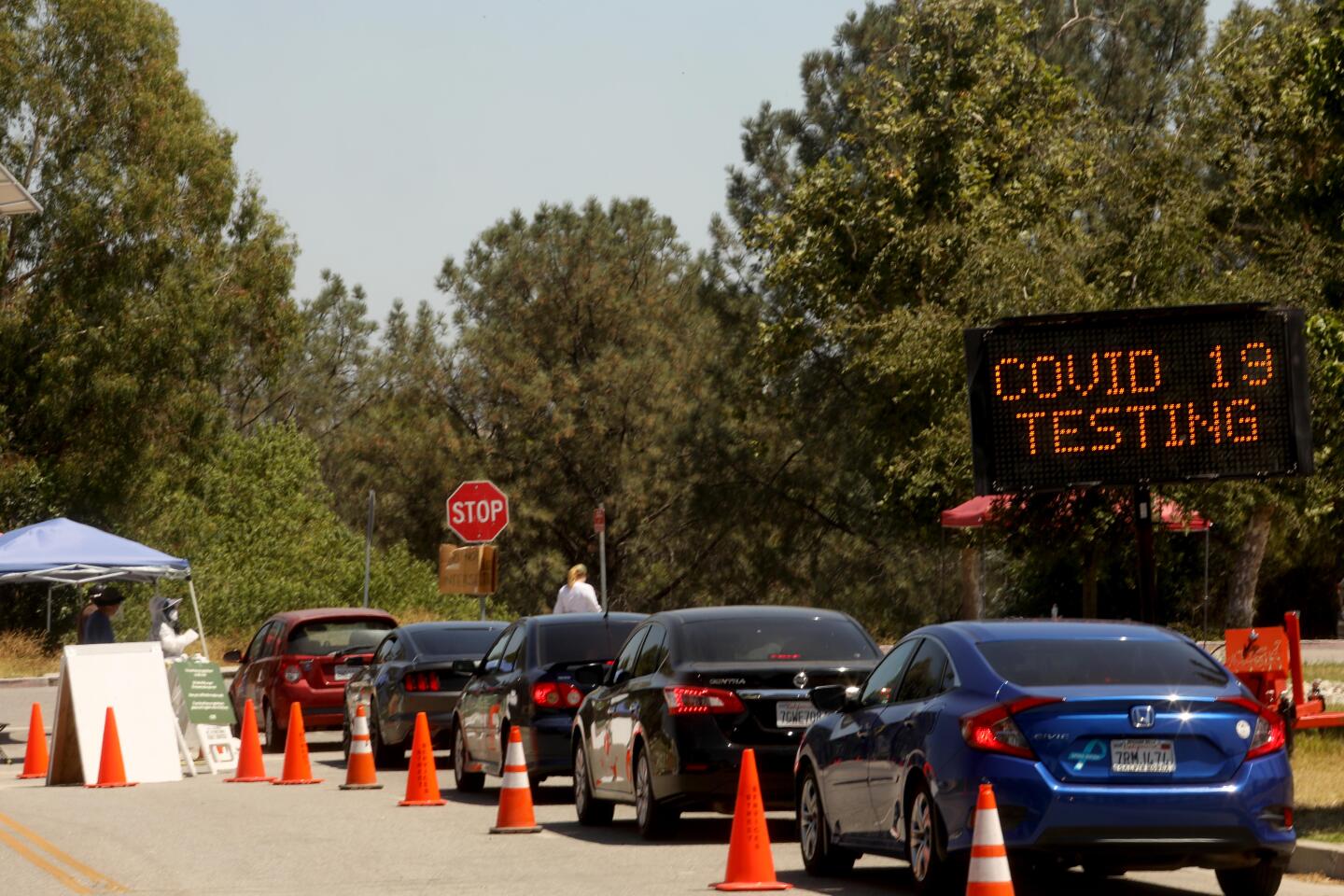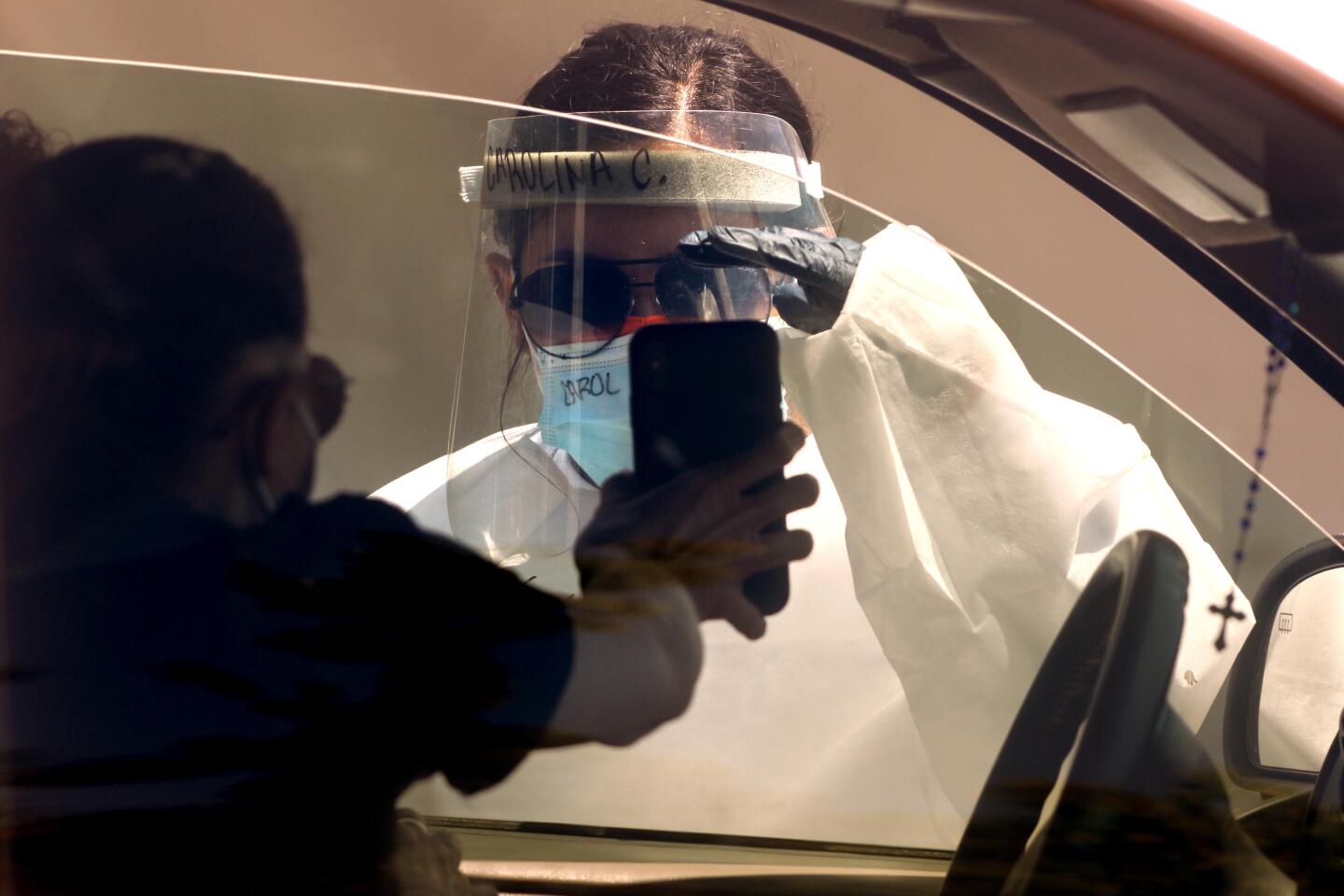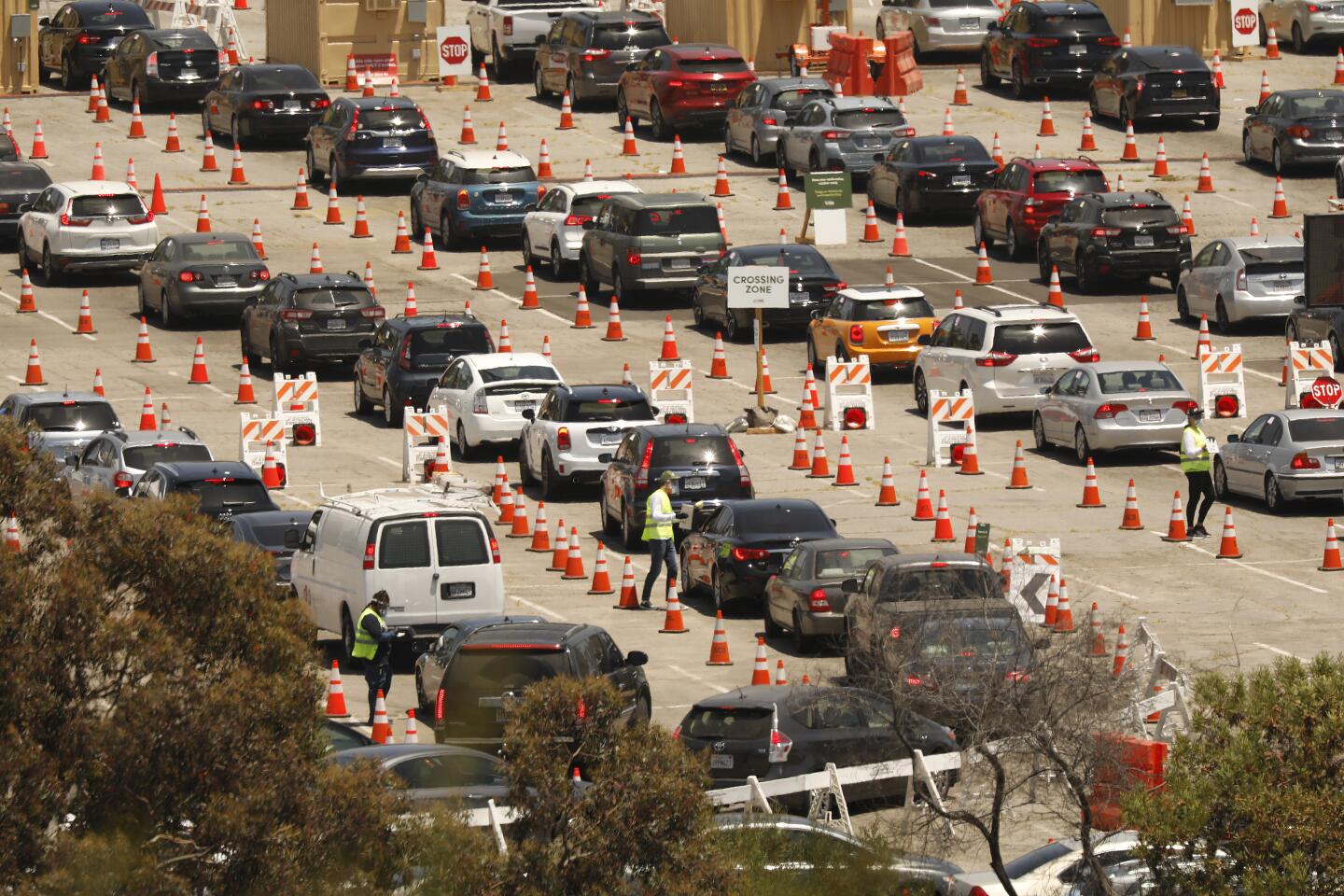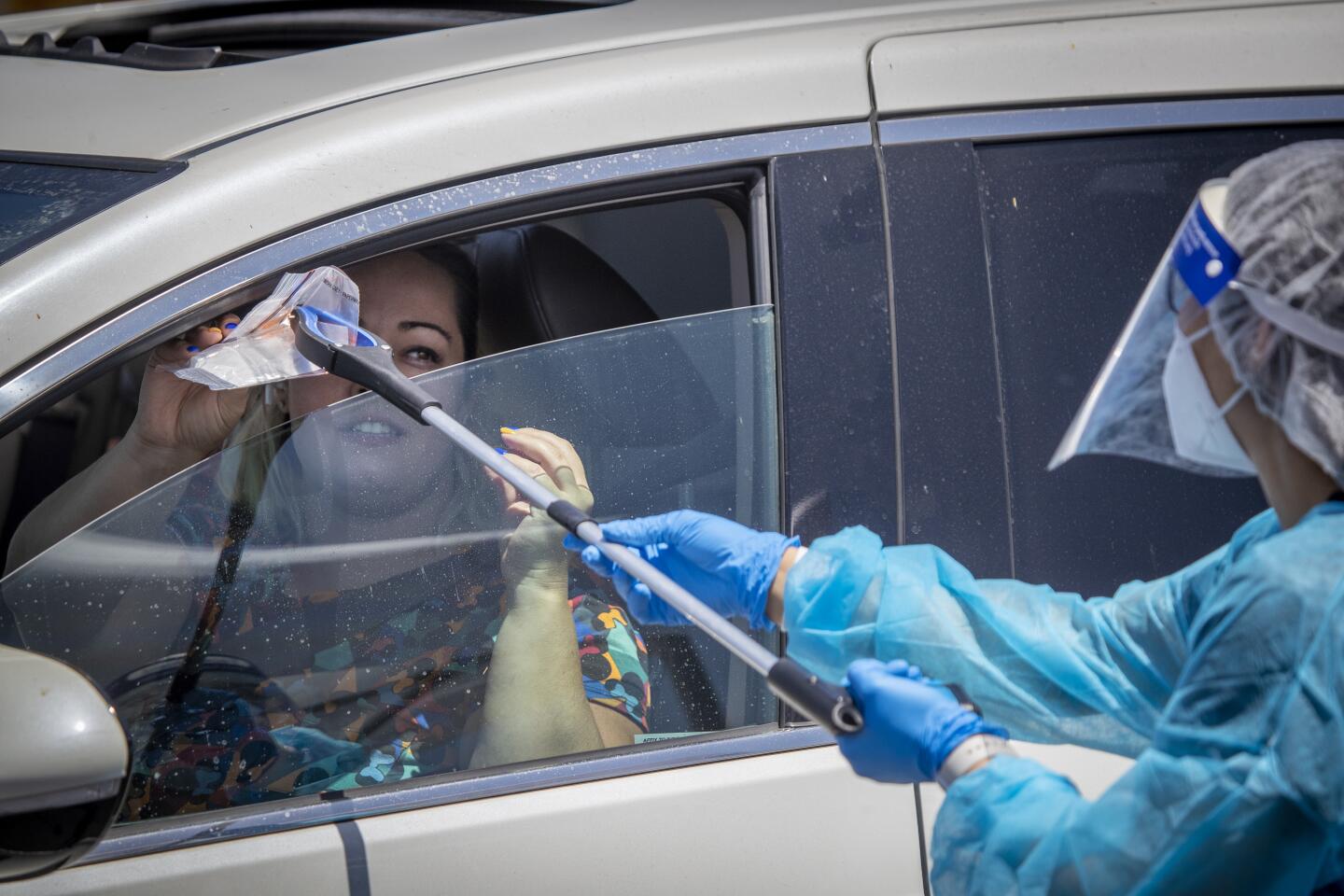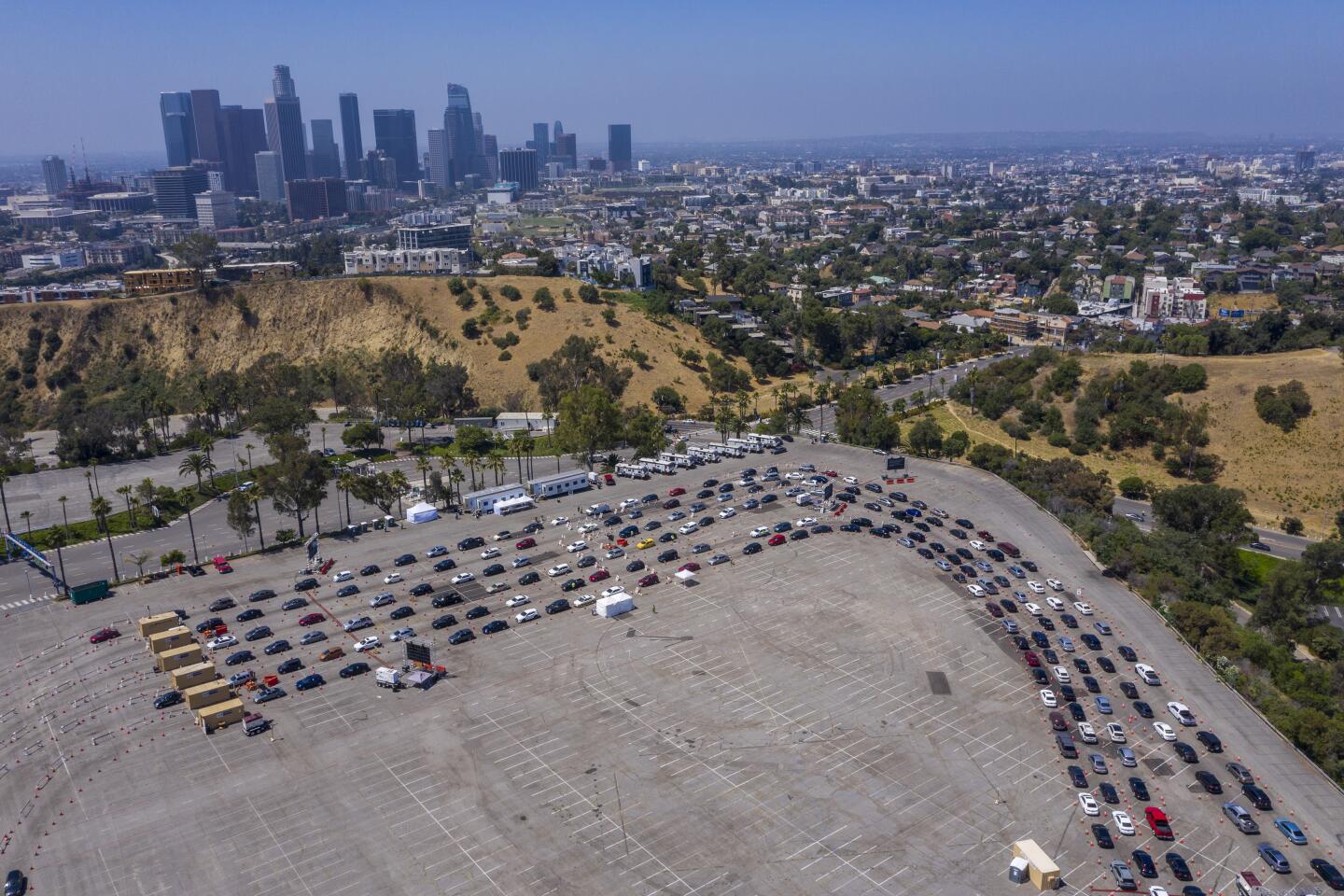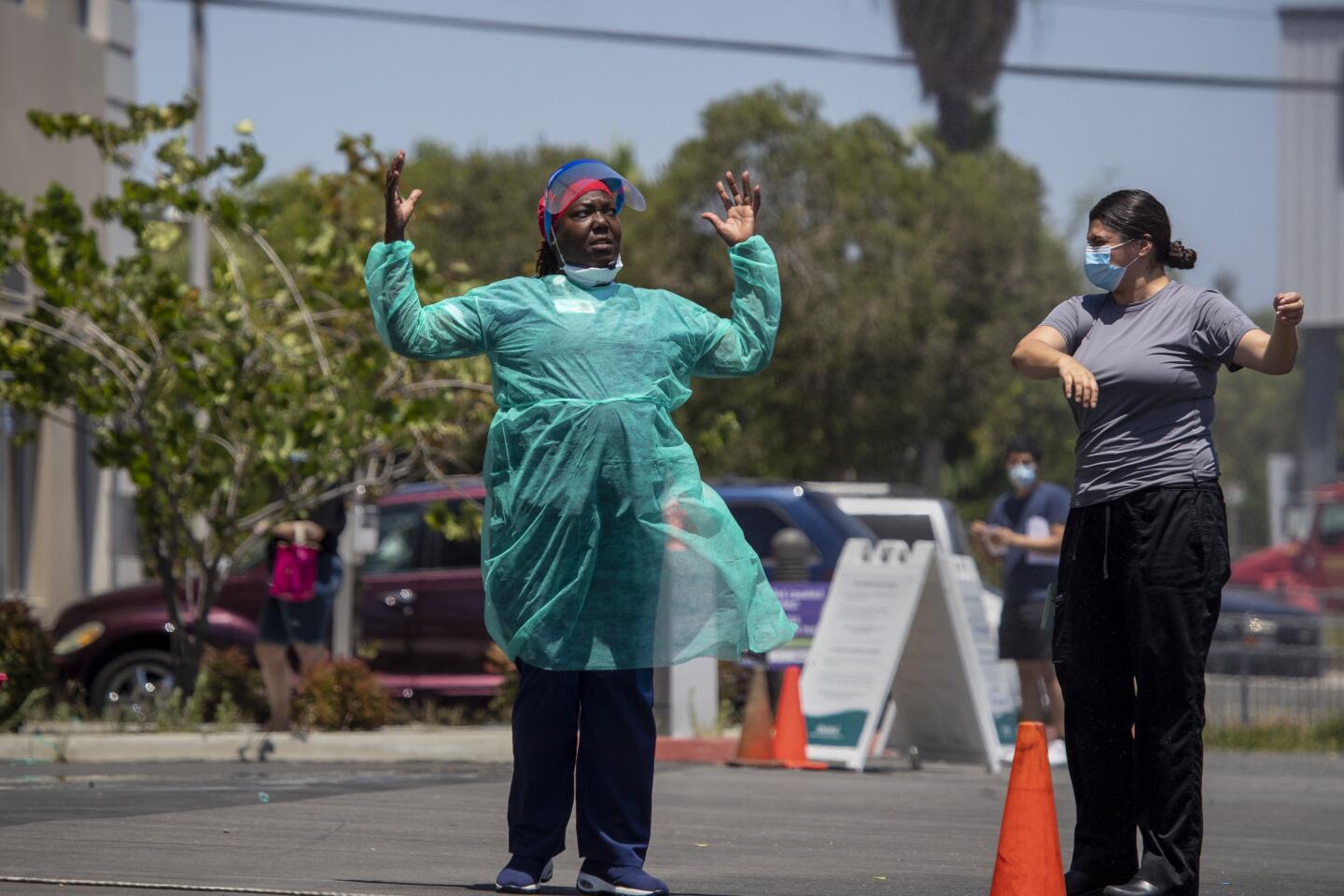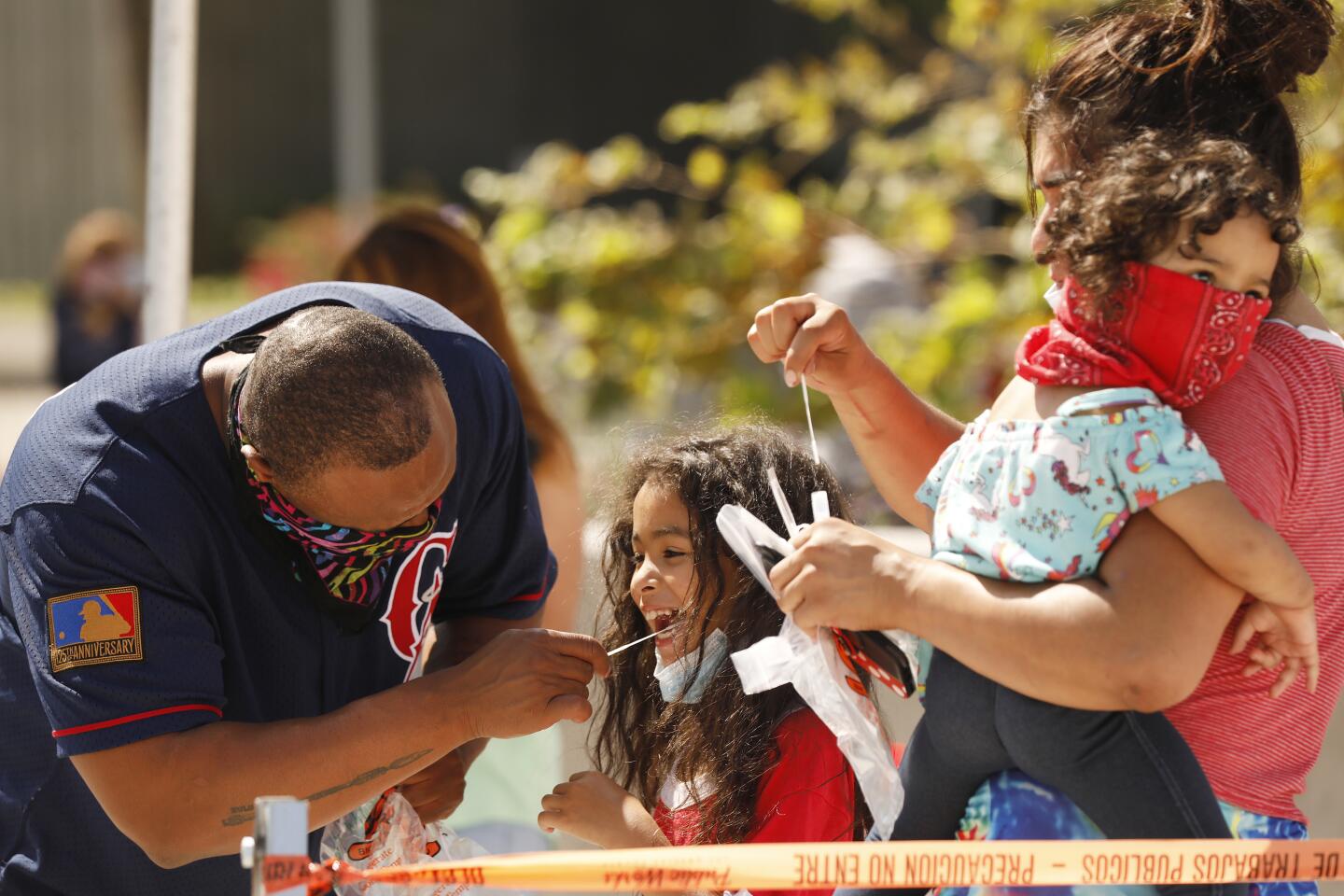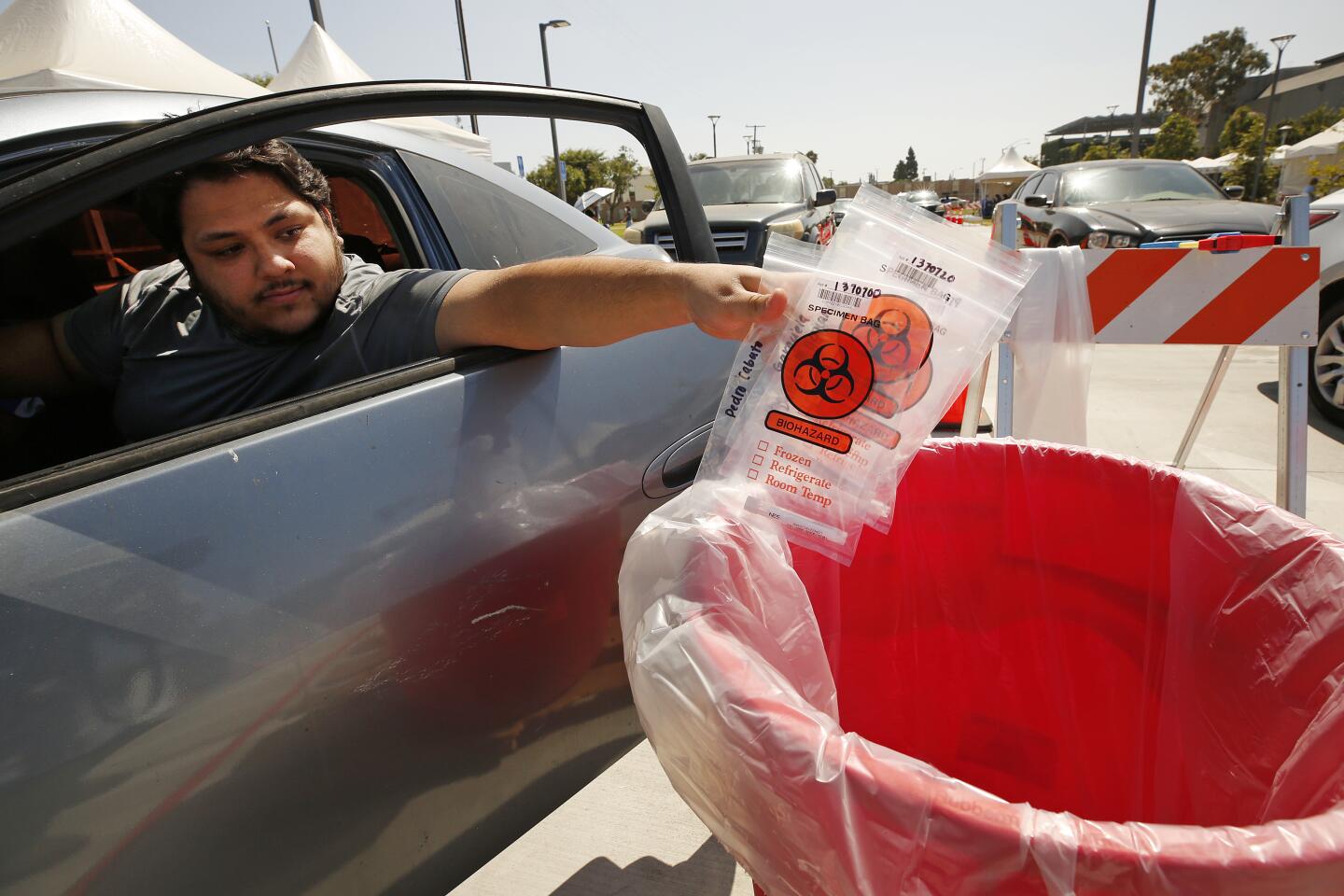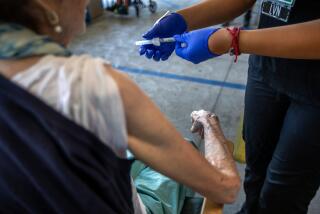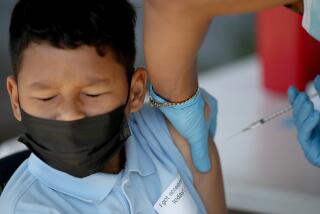Coronavirus surging among children, teenagers in California
Coronavirus cases among children and teenagers are surging in California, up 150% last month, a rate that outpaces COVID-19 cases overall and establishes minors as a small but growing share of the state’s COVID-19 cases.
The increase also appears to outpace the number of coronavirus cases among children nationally, which grew 40% in the second half of July, according to a study by the American Academy of Pediatrics and the Children’s Hospital Assn.
Nationally, children with COVID-19 represented about 8.8% of all U.S. cases at the end of July, compared to 9% in California, the analysis found.
That number is continuing to climb, with more than 50,000 cases among children and teenagers in California this week, representing about 9.5% of total cases, according to data from the California Department of Public Health. The number is still dwarfed by new cases among adults ages 18 to 50, who represent the majority of cases statewide.
The data comes among heated debate over when and how schools will be allowed to reopen, and what life will look like for students and teachers when they do.
Gov. Gavin Newsom said Monday that the state has seen “encouraging signs” in some key metrics, but “not the kind of stability ... that we ultimately need.”
That progress includes a 19% decline in coronavirus hospitalizations over the last two weeks, and a 13% decline in admissions to intensive-care units, Newsom said. About 8% of statewide hospital patients are being treated for COVID-19, down from 9% last week.
A new California system could allow local public health officials to grant waivers to reopen some elementary schools if the surrounding counties meet some state standards. Officials have said that counties with coronavirus transmission rates higher than 200 cases per 100,000 residents should not apply.
As hospitalization rates and ICU admissions fall, “more and more counties will have an opportunity to consider the waiver process and determine if it is the right thing” for local school districts, said Mark Ghaly, California’s Health and Human Services Secretary.
Officials in Los Angeles County, where the rate is 335 cases per 100,000 people, have said that no elementary schools will be allowed to reopen immediately. Teachers, administrators and other staff will still be allowed to return to school buildings if they observe social distancing and wear face coverings, officials said.
“We do need to prepare for the high possibility that once schools do reopen, there will be cases,” L.A. County Public Health Director Barbara Ferrer said.
Although cases among children are growing, young adults between the ages of 18 and 34 continue to represent an outsize share of new coronavirus cases in California.
Health officials have linked a number of outbreaks to younger adults and college campuses, including at least 45 people linked to three USC fraternities, a group of UCLA football players who returned to campus and tested positive, and dozens of cases at UC Berkeley linked to fraternity parties.
Younger people may feel that precautions such as social distancing and face coverings are unimportant because they are at a low risk of becoming seriously ill or dying of the virus. But experts say that the young can become “super spreaders,” transmitting the illness to the vulnerable, including older relatives and people with underlying health conditions.
“They’re cumbersome, they get sweaty,” Ferrer said, referring to face coverings. “But they do protect all of us.”
Competitions and other youth sporting events are still banned in California, but officials have allowed limited training and conditioning activities to resume.
All players and coaches need to maintain a physical distance of at least six feet and avoid physical contact. Everyone must wear a face covering unless they are swimming, eating, drinking or exercising heavily, Ferrer said. She also discouraged athletes from sharing equipment or water bottles.
Children younger than 2 should not wear face masks, Ferrer said. Neither should anyone who has trouble breathing, is unconscious or is “otherwise unable to remove the mask without some help,” she said.
Times staff writer Ben Welsh contributed to this report.
More to Read
Start your day right
Sign up for Essential California for news, features and recommendations from the L.A. Times and beyond in your inbox six days a week.
You may occasionally receive promotional content from the Los Angeles Times.
